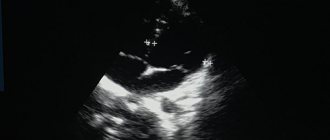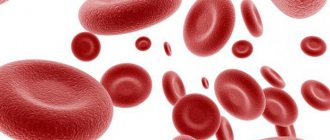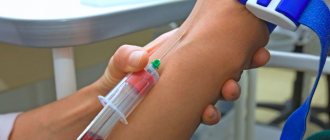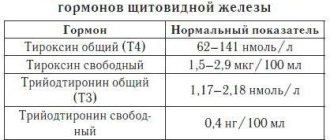In this article we will tell you:
- Antibody structure
- Mechanism of antibody formation
- Antibody classification
- Allergy and pseudo-allergy
- Antibody norms
- Immunodeficiencies: types and causes
- Causes and symptoms of IgA deficiency
- Causes of low immunoglobulin E class
- Immunoglobulin G deficiency
- Treatment and prevention of immunoglobulin deficiency
Immunoglobulins or antibodies
- one of the factors of specific protection against various pathogenic agents that illegally invade the body’s territory: viruses, bacteria, fungi, and allergens. Their structure, activation mechanism and the process of implementing the function are quite complex - they are not just universal killers, but clearly distinguishing between “one’s own” and “their” executive pieces on the chessboard of immunity.
Both an excess and deficiency of immunoglobulins, in general or of a certain class, can be a sign of various diseases, therefore, determining their concentration is an important, and sometimes the earliest stage of diagnostic measures, which allows timely identification of the type of pathogen, and, therefore, prescribing the correct treatment.
Antibody structure
All immunoglobulins contain in their structure two types of chains interconnected by chemical (disulfide) bonds: heavy (or H-) and light (L-) - and it is the variations of the former that contribute to the division of antibodies into classes. A specific combination of individual sections of chains folded into globule balls - domains - leads to the formation of the so-called paratope or antigen-binding center - a key structure, which, in essence, ensures the creation of the “antibody-foreign agent” complex.
In addition, each immunoglobulin has fragments that facilitate its binding to macrophages - the kind of “scavenger cells” that swallow and devour microbial bacteria. This once again speaks of the inseparability of two links of immunity: cellular and humoral
. By the way, as another indisputable evidence in favor of this important for understanding the nature of the immune response and the mechanisms of its implementation, is the fact that some classes of antibodies can act as facilitating factors in the previously mentioned process of phagocytosis.
It is also noteworthy that antibodies, the producers of which—plasmocytes—are the last of all police defenders to reach the site of inflammation—circulate not only in the blood, but are also found in some secretions secreted by the human body. We are talking about secretory forms - which, in particular, is possessed by a representative of such a class as immunoglobulin A, which is found, say, in the components of tear fluid, and also provides protection to the epithelial cells of the gastrointestinal tract. The existence of such a form requires not only a certain rearrangement in the “original” antibody molecule, but also the presence of an additional (besides the standard light and heavy) chain.
Antibody analysis in the diagnosis of TORCH infections
The abbreviation TORCH appeared in the 70s of the last century, and consists of capital letters of the Latin names of a group of infections, the distinctive feature of which is that, while relatively safe for children and adults, TORCH infections during pregnancy pose an extreme danger.
The blood test for TORCH infection is a comprehensive study, it includes 8 tests:
— Determination of antibodies to herpes simplex virus type 1,2 IgM and IgG
— Determination of antibodies to cytomegalovirus IgM and IgG
— Determination of antibodies to the rubella virus IgM and IgG
— Determination of antibodies to Toxoplasma gondii IgM and IgG
Often, infection of a woman with TORCH complex infections during pregnancy (the presence of only IgM antibodies in the blood) is an indication for termination.
Mechanism of antibody formation
Antibody producers
as previously mentioned,
are plasma cells
- the end products of the development (differentiation) of B-lymphocytes, which are normally formed in the red bone marrow, like other blood cells, and then sent for a kind of training abroad - to organs such as the spleen and lymph nodes . Here, at school desks and under the supervision of experienced teachers, they undergo serious training, the purpose of which is to form a clear and final understanding of what is “ours” and what is “alien” and must be destroyed.
The final final exam is harsh - the judges cannot be bribed, and the slightest glitch in the program immediately leads to inactivation by death sentence of the “wrong” clone. Such a clear set of rules has very impressive grounds: after all, if a cell that has gone crazy and escaped from general control begins to form similar bullets and arrows against the tissues of its own body, real confusion and chaos will begin, which is how the autoimmune process usually appears.
However, in fairness, it is still worth noting that such strict selection does not always bear fruit: and everything lies in such features of the human body as the existence of histohematic barriers
- normally impenetrable boundaries separating some organs. Undoubtedly, everyone has heard about the BBB - the blood-brain barrier - that customs control that separates the nervous tissue of the brain and the blood circulating through the vessels.
It is precisely thanks to the existence of such limiting barriers - there are only five of them - during embryonic development the immune system is deprived of the opportunity to get acquainted with the antigens of “behind-barrier” organs - thus, when faced with them in a particular pathology, it, without any hesitation, regards them as foreign and, therefore, uses its impressive reinforcement - in particular, antibody production. There is a violation of natural immunological tolerance.
However, neither B lymphocytes nor their mature forms— plasmocytes
- are not able to independently activate upon contact with most pathogenic agents (although there are rare exceptions) -
for this they need a stimulating signal from T cells
: a kind of kick to action, carried out at the molecular and cellular level. They are provided with this opportunity by T-helpers, a motley population of the previously mentioned type of lymphocytes: they, secreting certain molecules, burst into alarm.
However, if the process itself ended at this stage, it would be boring and, in some way, primitive. However, nature is still a magician. T-helpers are intermediaries that only convey the information they hear about a sudden invasion: they themselves do not fight the enemies and do not torture the scouts. Their only job is to recognize and report to higher management.
So, let's take it in order. A foreign substance enters the body in some way, which, depending on the state of the immune system and other functional systems, is intercepted and absorbed by a macrophage policeman at one of the customs borders - it will remain there until further proceedings in the courtroom and a final and impartial verdict are made . “Devouring” troublemakers leads to some changes in the structure of their overseer - in particular, on its surface it expresses certain protein complexes, which will present particles of foreign antigen to representatives of certain populations of T-lymphocytes (or rather to their receptors). Further, through complex cascade mechanisms for transmitting various kinds of signals, the enemy will be recognized and battle tactics will be chosen: with the connection of antibody production or purely cellular forces.
Antibody classification
- Depending on the temperature at which immunoglobulins form complexes with an antigen - a substance foreign to a given organism - all antibodies can be divided into two groups:
- Thermal
— “glue” the antigen at body temperature — that is, at 37 degrees;
- Cold
— interact with antigens, on average, at +4.
- Based on the ability to form a large (macromolecular) structure when interacting with a pathogenic agent, immunoglobulins can be complete or incomplete.
- The main, most commonly used classification of immunoglobulins is based on what type of heavy chain underlies their nature. So, there are 5 classes:
We recommend
“Selenium deficiency: what foods are needed to replenish it” Read more
- Immunoglobulin M (IgM)
— are formed at the moment of the first meeting of immunocompetent cells with antigens. This process is quite long and is characterized by an impressive latent phase - thus, diagnostically significant antibody titers appear only by the 2nd week of the disease - on average, on the 10-14th day.
So, this class of antibodies is a kind of pioneers who get to meet unwanted guests and, only after a not very rosy tea party, switch antibody production to the synthesis of their slightly different counterparts.
- Immunoglobulins G
— they account for the majority of antibodies in the blood serum (up to 80%). Having a small size and small molecular weight, they are the only class of antibodies that passes through the placental barrier and thus provides natural passive immunity to the fetus - however, it lasts no more than six months.
In general, the inability of most immunoglobulins to overcome this barrier, which clearly distinguishes the blood of the mother and the fetus, plays a dual role - both positive and negative. So, let’s say, one of the leading causes of the development of meningitis, inflammation of the membranes of the brain of a bacterial nature, which is caused by some opportunistic strains of Escherichia coli, is associated precisely with the inaccessibility of the customs border in the form of the placenta for the bulk of antibodies.
As was already said earlier, upon initial contact with a foreign substance, at the antibody production factory, the launch of batch formation of IgG does not occur immediately - and this is the difference in the body’s reactions during further repeated encounters. Our body is unique: it has its own memory archives, where the nature of each of the enemy raids is tirelessly recorded.
So, at the second, third, tenth meeting, the latent phase, during which sleepy flies in the form of immunocompetent cells are disinhibited, lasts several times less: instead of 3-5 days - only a few hours. In addition, there is no switching: the synthesis of immunoglobulins of various classes begins immediately. The body, despite the surprise of the invasion, is well prepared theoretically and is able to give a much quicker response.
From the point of view of correctly establishing the stage of the disease, it is diagnostically important that, despite its much later appearance, IgG has a fairly long half-life, which averages 23 days, compared to 2-3 for IgM.
Thus, one more important conclusion can be made: the detection of class M antibodies in the patient’s blood -
clear
evidence of an ongoing pathological process
, while the detection of IgG can indicate a recent vaccine (after all, in fact, it contains dead or weakened pathogens or fragments of their molecules) or an anamnestic process.
- IgA
- can be presented in both serum (up to 10%) and secretory forms. The latter, by the way, is the leader and provides antimicrobial local immunity in relation to the mucous membranes of the gastrointestinal tract, bronchi, and urinary tract.
Despite the fact that they are not able to pass through the placenta, these immunoglobulins are transferred to the newborn along with mother's milk - another important nuance towards the undeniable benefits of breastfeeding.
It is interesting that some causative agents of pathogenic diseases, which, as a rule, invade the mucous membranes of certain organs, have specific protective factors against the police officers of the human body: protease enzymes capable of breaking down chemical bonds in the protein molecules of antibodies.
The secretory form of immunoglobulin A is capable of specifically recognizing and binding to certain areas of antigens - epitopes - in the structures of both bacteria, viruses and even toxins.
- IgD
- a little-studied class of antibodies with very low levels in the blood. Their role in the functioning of the immune system is more than unclear.
They are believed to be involved in autoimmune reactions and also act as receptors for B lymphocytes.
- IgE
— their concentration in serum does not exceed 0.004% of the total amount of antibodies.
However, such a small content does not prevent them from performing one of the most important tasks: participation in allergic reactions. allergens
—foreign substances— appear in the serum In this case, their peculiar “binding” of IgE occurs, fixed on mast cells - representatives of connective tissue components. Thus, the body gets acquainted with a substance unfamiliar to it for the first time.
When the allergen is re-entered, the already aware immune system is immediately activated: inflammatory mediators (in particular, histamine) deposited in mast cell granules are released, which contributes to further tissue damage.
As a rule, such processes include anaphylaxis, which occurs during parenteral (that is, bypassing the gastrointestinal tract) administration of foreign substances, as well as atopies that develop in a genetically predisposed category of people, and include:
- bronchial asthma;
- hay fever or allergic rhinitis;
- hives;
- food allergies;
- Quincke's edema.
Indications for research
Frequent indications for immunoglobulin analysis are recurrent and chronic infectious diseases. The study is prescribed for patients with bacterial damage to the respiratory tract - sinusitis, pneumonia, tonsillitis. Also, suspicion of reduced activity of humoral immunity arises with prolonged and frequently recurring otitis, with meningitis, with symptoms of gastrointestinal infections. Immunoglobulin M is used to detect intrauterine infections. In addition, a blood test for immunoglobulins is performed for tumor diseases of the lymphoid system - myeloma, leukemia, lymphoma, reticulosarcoma, as well as for autoimmune diseases and liver pathologies.
The advantage of the analysis is its high information content - the results reflect several parts of the humoral immune response at once: the body’s ability to quickly recognize a foreign agent, the formation of antigenic “memory”, and the activity of protecting the mucous membranes. Sometimes some decrease in indicators is transient and reversible. To differentiate such a deviation from a truly existing violation of the body's anti-infective defense, this study is prescribed together with a test for CEC and phenotyping of lymphocytes.
Preparation for analysis and collection of material
Immunoglobulins are determined in venous blood; sampling is recommended to be done in the morning, before meals. If the procedure is scheduled for another time, then at least 4 hours should pass after eating. The day before the test, you need to avoid alcohol, cancel sports training and other types of intense exercise. 3 hours before donating blood, you must refrain from smoking; the last 30 minutes should be spent in a calm environment. Some medications change the level of immunoglobulins in the blood, so you should tell your doctor about all medications you use. Blood is taken from the cubital vein, stored and transported in tubes with an anticoagulant.
The level of immunoglobulins is examined in the blood serum. Before the analysis procedure, the tubes are placed in a centrifuge, and then clotting factors are removed from the separated plasma. A common research method is immunoturbidimetry. Its essence lies in the fact that antigens are introduced into the serum, which form complexes with immunoglobulins. The density of the test sample increases, which is measured using a photometer; based on the obtained indicators, the level of immunoglobulins is calculated.
Allergy and pseudo-allergy
To correctly and clearly understand the problem with which the client comes to you, it is necessary to accurately distinguish between these terms, which are fundamentally different from each other:
- Pseudoallergy
- a pathological process that, in terms of clinical manifestations and symptoms, is similar or even identical to those that occur with allergies.
However, in the mechanism of its development there is no immunological stage
- that is, there is no preliminary binding of IgE allergens, and the immediate release of inflammatory mediators is immediately observed - in particular, histamine.
| Allergy | Pseudoallergy |
| 1. Pathology of the immune system. | 1. Caused by increased levels of histamine. |
| 2. High level of IgE. | 2. Normal IgE level. |
| 3. Histamine levels are within normal limits. | 3. Increased histamine concentration. |
| 4. A reaction occurs to the introduction of small doses of the allergen. | 4. Reaction - to large doses of allergens. |
| 5. Preliminary sensitization (increased sensitivity) of mast cells upon initial contact. | 5. Direct effect on target cells. |
| 6. Specificity of reactions - they occur to one substance. | 6. Lack of specificity. |
Antibody norms
Reference values for total IgE (mU/l) according to Martins T. et al. (2014)
| 6-12 months | 2-34 |
| 1-2 years | 2-97 |
| 3 years | 2-199 |
| 4-6 years | 2-307 |
| 7-8 years | 2-403 |
| 9-12 years | 2-696 |
| 13-15 years old | 2-629 |
| 16-17 years old | 2-537 |
| 18 years and older | 2-214 |
Study
: Modern clinical aspects of assessing the levels of total and specific IgE
| Age group | Floor | Normal immunoglobulin IgG content |
| 0-1 month | Male | 3.97-17.65g/l |
| Female | 3.91-17.37 g/l | |
| 1-12 months | Male | 2.05-9.48 g/l |
| Female | 2.03-9.34 g/l | |
| 1-2 years | Male | 4.75-12.1 g/l |
| Female | 4.83-12.26 g/l | |
| 2-80 years | Male | 5.4-18.22 g/l |
| Female | 5.52-16.31 g/l |
| Age group | Normal content of immunoglobulin IgM |
| Up to a year | up to 1.4 g/l |
| 2-4 years | 0.19-1.45 g/l |
| 5-7 years | 0.4-2.1 g/l |
| 8-10 years | 0.31-2.08 g/l |
| 11-13 years old | 0.66-1.5 g/l |
| 14-16 years old | 0.15-1.88 g/l |
| Child's age | Normal content of immunoglobulin IgE |
| Newborn | 0-1 kE/l |
| 1-2 months | 0-2 kE/l |
| 3-6 months | 3-10 kE/l |
| 7-12 months | 8-15 kE/l |
| 1-2 years | 10-20 kE/l |
| 2-5 years | 10-50 kE/l |
| 5-12 years | 15-50 kE/l |
| 12 -15 years old, girls | 30-90 kE/l |
| 12-15 years old, boys | 25-80 kE/l |
| 15-18 years old | 20-100 kU/l |
Immunodeficiencies: types and causes
Immunological deficiency
- a certain defect of the immune system, which can be either acquired (secondary immunodeficiency) or genetically determined (primary immunodeficiency), and manifests itself in the form of an inability to fully implement the reactions of cellular and/or humoral immunity.
Both primary and secondary antibody deficiencies can be associated with
:
- infections;
- damage to various organs and tissues;
- increased risk of morbidity and mortality.
It is assumed that immunoglobulin deficiency
, which is not genetically determined, is usually
observed with
:
- Significant protein loss
(after all, antibodies are of a peptide nature), which accompanies various types of kidney diseases, when large protein molecules, which normally do not pass through the narrow cells of the kidney filter and remain in the blood, end up in the primary urine. In particular, this is characteristic of nephrotic syndrome.
In addition, protein loss can also occur through the gastrointestinal tract - this is especially characteristic of celiac disease and intestinal lymphangiectasia, caused by obstruction of the lymphatic vessels located in the interstitium, which, in turn, contributes to the leakage of lymph along with immunoglobulins and lymphocytes into intestinal lumen.
- Malignant tumors.
- Organ and tissue transplantation.
- After using certain medications
- for example, the use of corticosteroids (both long-term and short-term).
Study
: Secondary antibody deficiency – causes and approach to diagnosis
Depending on which part of the immune system is affected, all immunodeficiencies can be divided into three large groups
:
- Humoral
- associated with impaired formation and/or differentiation of B-lymphocytes - future producers of antibodies.
Here, in the context of this pathology, I would like to once again mention the inextricably linked reactions of cellular and humoral immunity
: after all, in fact, if T-helpers do not shout louder than any police siren to B-lymphocytes: “alarm, alarm!”, the factory for the production of immunoglobulins will remain closed - work will not begin, the conveyor belts will still be motionless. This usually accompanies two pathological processes
- the presence of defects in those signaling molecules with the help of which T-helpers try to reach B-lymphocytes or disturbances in the receptors that perceive them.
- A decrease in the total number of T helper cells and/or their inability to activate B lymphocytes.
- Cellular
- associated with impaired formation or functioning of T-lymphocytes:
- DiGeorge syndrome
- a rather rare congenital disease that is not inherited and is characterized by a violation of the formation of the thymus gland. The absence of the thymus leads to the fact that T-lymphocytes (it’s not for nothing that they are called thymus-dependent) are not formed - this, in turn, affects the inferiority of the humoral response, which invariably requires the participation of T-helper cells.
- Alymphocytosis
is an autosomal recessive disease associated with certain mutations that lead to the inability of immature T cells to differentiate into different subpopulations: in particular, helper T cells and killer T cells.
- Mixed
— both links of immunity are impaired: both cellular and humoral. They have the most severe course.
We recommend
“Balanced nutrition: the right diet and the right foods” Read more
In general, when talking specifically about antibody deficiency, it is important to understand the difference between selective and general deficiency
: the first concerns purely one class of immunoglobulins, the formation of which is significantly reduced (most often it is IgA), while the synthesis of others is not impaired or, on the contrary, is compensatory increased. The second speaks about the pathology of the humoral immunity as such: this is either a complete absence of immunoglobulin production (for example, with the inability of B-lymphocytes to transform into their final mature forms - plasmacytes), or a significant decrease.
Preparing for a blood test
Blood is drawn from a vein in the morning on an empty stomach. If the procedure is performed at another time, the interval after eating should be at least 3-4 hours. On the eve of the study, it is recommended to refrain from drinking alcohol and excessive stress on the body. A few days before blood sampling, the doctor recommends that you stop taking medications that may affect the test results.
It is recommended not to smoke in the last 3 hours before donating blood. Blood is drawn from the ulnar vein. Biological material is stored and transported in sealed tubes at an air temperature of +2 to +4° C. Research results can be obtained within 24 hours. They are interpreted by doctors at the Yusupov Hospital.
Causes and symptoms of IgA deficiency
Selective IgA deficiency
- complete absence or decrease in the level of antibodies of this class below 0.07 g/l with normal concentrations of immunoglobulins G and M in the blood serum in patients over 4 years of age.
This is the most common and widespread (for example, the incidence of the disease on the Arabian Peninsula is only 1:143) genetically determined pathology of the immune system.
Clear age boundaries are associated with the immaturity of the immune system in children - in them, a decrease in antibody titers may not be a consequence of congenital immunodeficiencies, but characterize the so-called transient (that is, due to adaptation to a new, extrauterine life) condition.
It is believed that this pathology develops when the final stage of maturation of those B-lymphocytes that are “programmed” to form this class of antibodies is disrupted, and, in turn, leads to a compensatory increase in the content of IgG and IgM.
Such patients have a more frequent course of allergic diseases, including
:
- bronchial asthma;
- hay fever;
- hives;
- food allergies.
Scientists and doctors associate this phenomenon with the natural penetration of various foreign allergens into the wall of the gastrointestinal tract - into its mucous and submucosal layers, which occurs much more easily and more actively in conditions of such primary immune deficiency.
We recommend
“How vitamins work” Read more
In addition, studies have also documented an increase in the incidence of autoimmune diseases (compared to healthy control groups) - and it is noteworthy that female gender was one of the predisposing factors. The most common pathologies were
:
- systemic lupus erythematosus;
- rheumatoid arthritis;
- thyroiditis;
- celiac disease.
In the context of the treatment of celiac disease, previously described in our blog, we remind you of the need to determine the initial, that is, total IgA level before directly diagnosing the antibody titer
(or rather autoantibodies - immunoglobulins against their own structures) of this class to
endomysium and tissue transglutaminase.
IgG is higher than normal
A high concentration of IgG is observed in the following cases:
- acute form or relapse of the disease;
- remission after primary infection;
- diseases of the respiratory system, gastrointestinal tract and genitourinary system in acute, subacute and chronic forms;
- liver diseases: hepatitis (autoimmune or viral);
- cirrhosis, including alcoholic;
- lupus erythematosus (damage to the skin and connective tissue);
- myeloma of the IgG type;
Causes of low immunoglobulin E class
Immunoglobulin E, as previously mentioned, takes part in allergic reactions. However, its second function is no less significant: antibodies of this class provide protection against parasitic infections.
There are two types of deficiency
:
- Selective IgE deficiency
- characterized by a significant decrease in its concentration in plasma: less than 2.5 mU/ml or 8 ng/ml, provided that levels of antibodies of other classes are normal.
- Mixed IgE deficiency
- with a simultaneous decrease in the concentration of other classes of immunoglobulins.
The results of a recent study on the connection between this pathology and Helecobacter infection, which is associated primarily with the development of gastritis and its further more serious complications, are interesting. However, unfortunately, the already proven fact that this type of bacterium, penetrating the gastric mucosa, causes powerful, both local and systemic, production of antibodies and the implementation of protective reactions from cellular immunity, is not so often paid attention to.
This pathogenic microorganism binds to mast cells, causing them to produce multidirectional pro-inflammatory signaling molecules - cytokines. This is partly facilitated by IgE, which continuously activates the previously mentioned connective tissue cells.
Study
: Helicobacter pylori infection in patients with selective immunoglobulin E deficiency
A low concentration of IgE can be a consequence of congenital pathologies caused by a gene or chromosomal mutation ( ataxia-telangiectasia, Bruton's hypogammaglobulinemia
), and accompany acquired diseases:
- chronic fatigue syndrome;
- autoimmune diseases;
- arthralgia.
IgG antibodies
The main role of IgG antibodies is the long-term protection of the body from most bacteria and viruses - although their production occurs more slowly, the response to an antigenic stimulus remains more stable than that of IgM class antibodies.
Levels of IgG antibodies rise more slowly (15-20 days after the onset of illness) than IgM antibodies, but remain elevated longer, so they may indicate a long-standing infection in the absence of IgM antibodies. IgG may remain at low levels for many years, but upon repeated exposure to the same antigen, IgG antibody levels rise rapidly.
For a complete diagnostic picture, it is necessary to determine IgA and IgG antibodies simultaneously. If the IgA result is unclear, confirmation is carried out by determining IgM. In case of a positive result and for an accurate diagnosis, a second test, done 8-14 days after the first, should be checked in parallel to determine the increase in IgG concentration. The results of the analysis must be interpreted in conjunction with information obtained in other diagnostic procedures.
IgG antibodies, in particular, are used to diagnose Helicobacter pylori, one of the causes of ulcers and gastritis.
Immunoglobulin G deficiency
Common variable immunodeficiency (CVID)
- primary, in other words, genetically determined, insufficiency of the immune system, which is characterized by a violation of the humoral link and is manifested by hypogammaglobulinemia.
In the blood serum of such patients, significant decreases in IgG levels are observed in combination with a reduced concentration of class A and/or M antibodies
- the last condition is the main difference between this pathology and a deficiency of a purely IgG isotype and reflects deeper defects in B cells.
Clinical manifestations in such patients usually include:
- Development of autoimmune diseases:
- vitiligo;
- cytopenia;
- arthritis.
- Interstitial lung diseases.
- Enteropathies.
- Lymphoid hyperplasia.
- Splenomegaly.
Treatment and prevention of immunoglobulin deficiency
With a complete deficiency of immunoglobulins, caused by certain congenital mutations that occur in the genes responsible for the regulation of this process, the artificial introduction of donor antibodies does not achieve the desired result, but only aggravates the course of the disease - an allergic reaction occurs
.
Remember about immunological tolerance - the inability of the immune system to produce antibodies against its own antigens (with the exception of barrier organs, of course). This is a kind of condescension on her part, the seeds of which are laid during embryonic development - she encounters various molecules and, in the end, develops a clear rule: “these are our own” and “these are strangers.”
But in the initial absence of antibodies in the body - say, class A - immunocompetent cells are deprived of this opportunity: they have never encountered them before, in their complexly programmed database centers there is no mention of this substance as their own - and, therefore, they begin to the most logical solution to the problem in this situation: the destruction of foreigners.
We recommend
“Metabolic syndrome: causes, symptoms, treatment and prevention” Read more
Yes, it sounds paradoxical: immunoglobulins versus antibodies
- but this is not oil or a play on words, but a real process that occurs for very understandable reasons and mechanisms, on which, by the way, some methods of serological diagnosis of certain diseases are based.
In general, selective immunodeficiency does not always require intervention from doctors, especially if it is asymptomatic. For more severe pathologies of the immune system, which are usually detected in the first years of life, either a thymus gland transplant is performed, or immunoglobulin injections and antibiotics are prescribed as a preventative measure for bacterial diseases.









